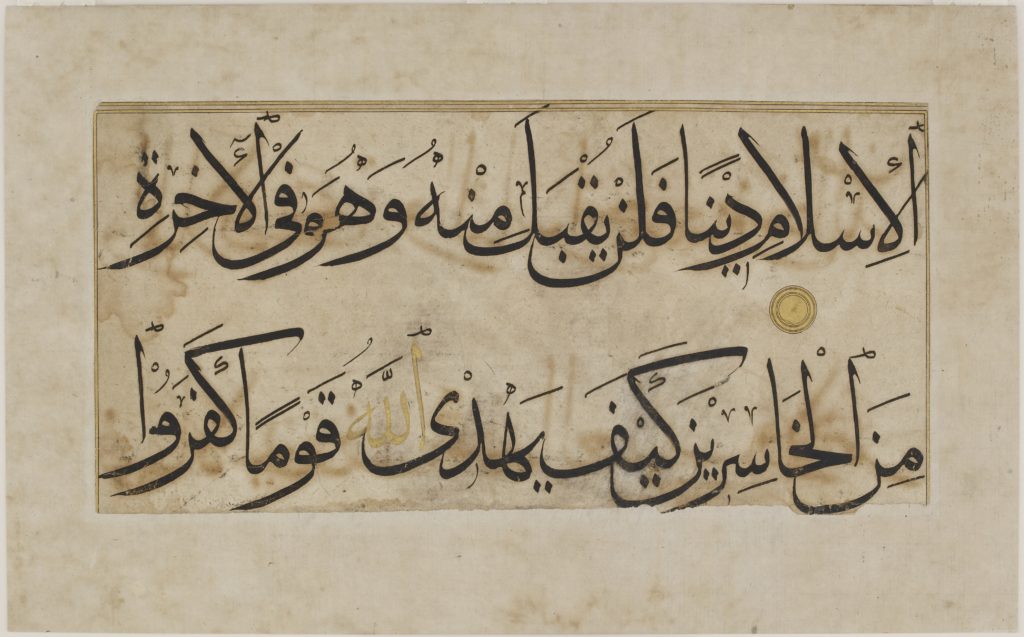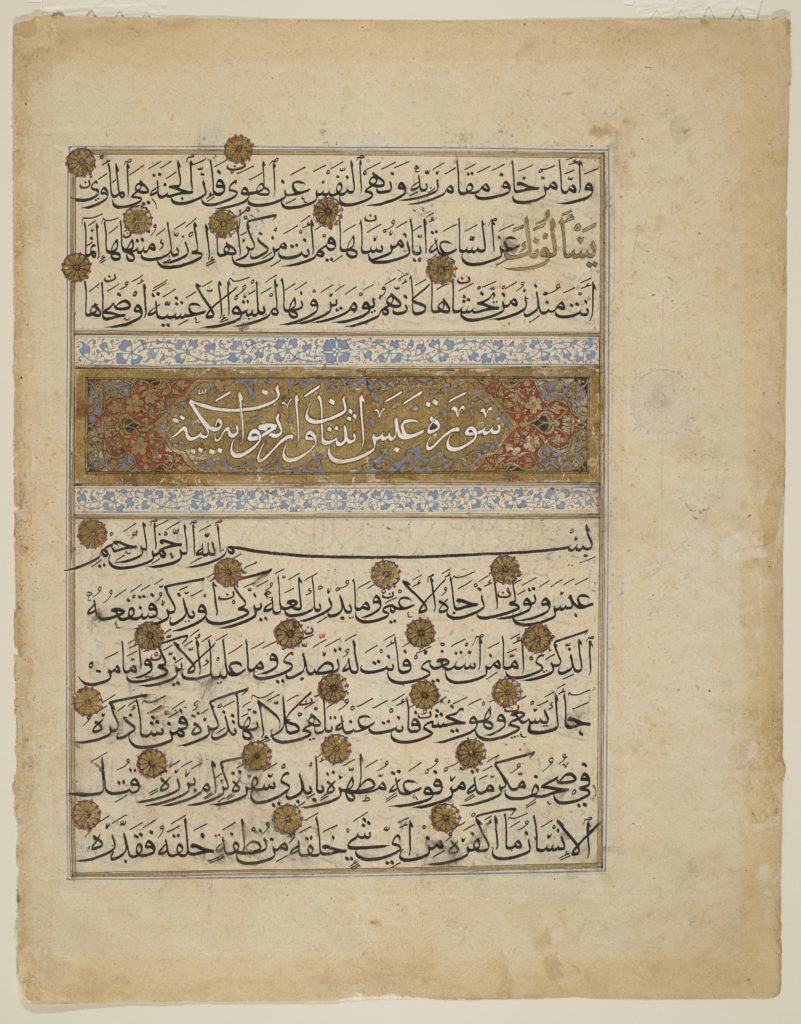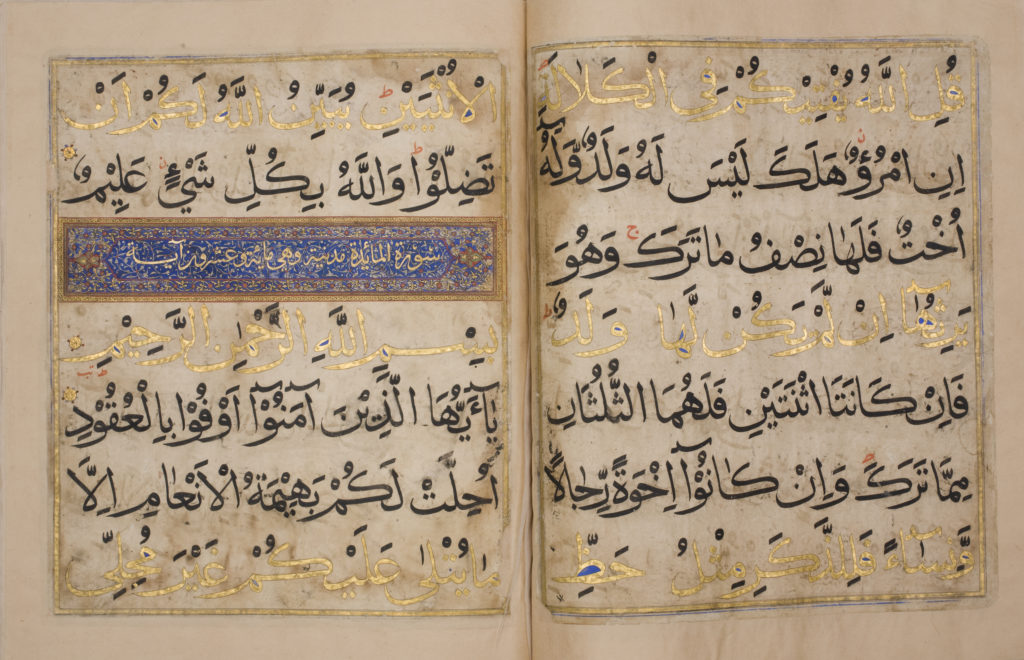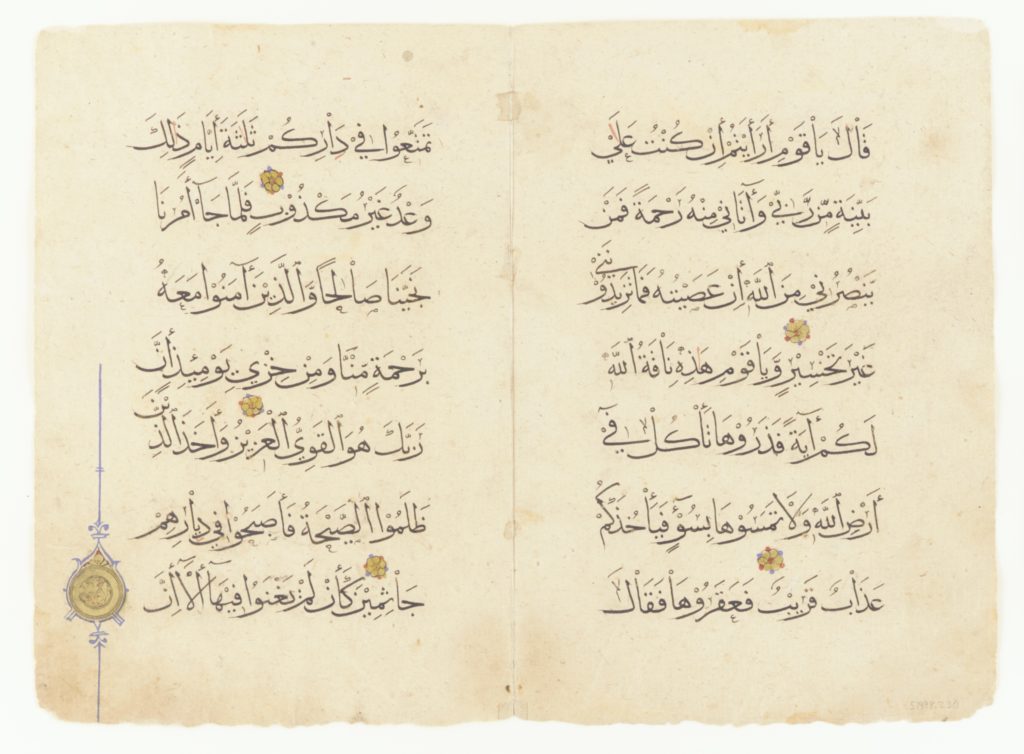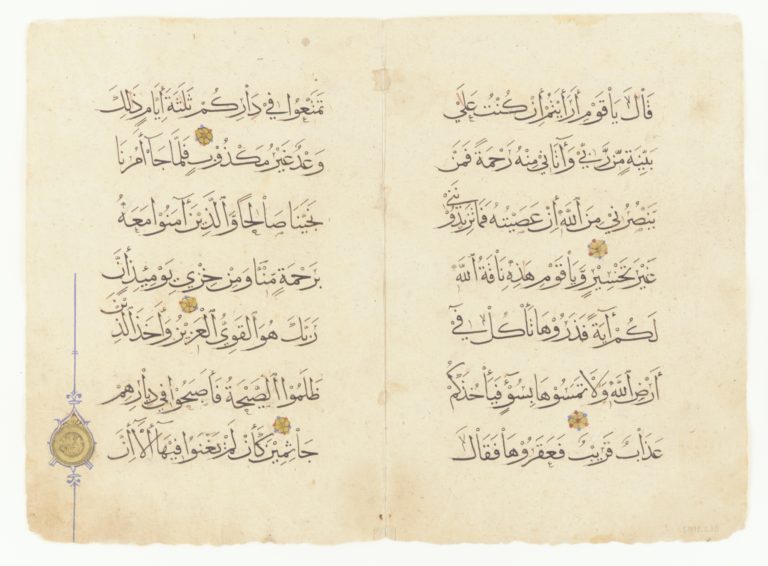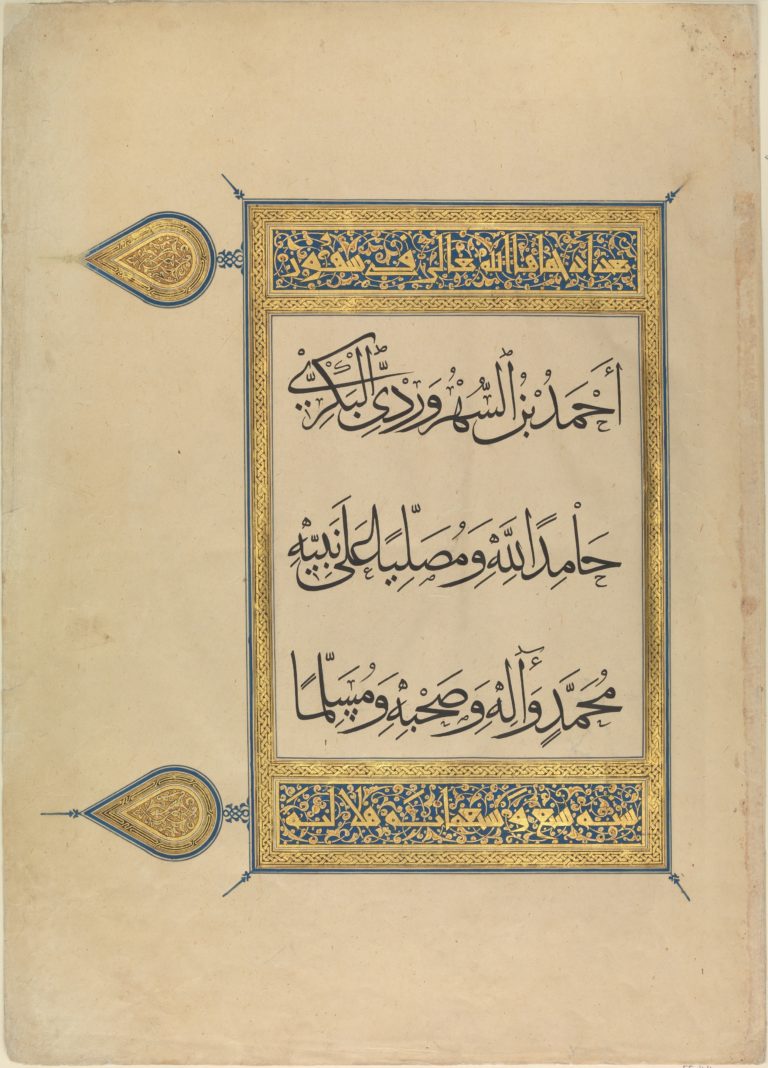Muhaqqaq
(Pronounced “moo-huk-uk”; Turkish–Muhakkak; Persian–Mohaqqaq)
Meaning
- “Muhaqqaq” means “fully-realized,” and “strongly expressed”
Uses
- Muhaqqaq was used throughout the Islamic world to write fine, large Qur’ans or architectural inscriptions
Companion script
- Muhaqqaq is most often written in conjunction with rayhani, which is a smaller version of the same script.
Timeline
- Developed in the 10th century
- Refined by Şeyh Hamdullah in the 15th century
- Yielded its place to Thuluth at the end of the 17th century
- Muhaqqaq is mostly obsolete today, but by tradition is still used to write the bismillah (an Islamic phrase meaning, “In the name of God, most gracious, most compassionate”)
Distinctive characteristics
- Precise, angular script with upright letters
- Carefully balanced ascenders and horizontal letters
- Strong horizontal emphasis (wider than it is shorter)
- Descending strokes end in a straight, sharp points rather than turning upwards in a hook
- Descending round strokes often encircle the following letter
